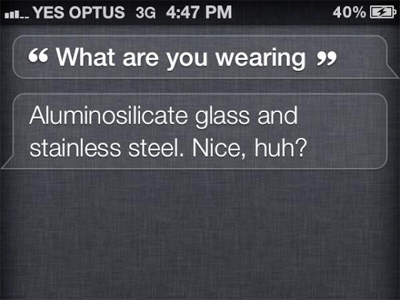Over the last decade, our generation has been exposed to numerous technology trends claiming to be the next big thing. While working and studying communications and marketing, I’ve been subjected to countless hours of persuasion about why I should be using SnapChat, the benefits of RSS feeds or how the iPhone 4 has become technologically obsolete. While the shelf life of some of the aforementioned tools is still debatable, there are a few undeniable technology fails that didn’t live up to the hype.
5 Technology Fails of the Last Decade
1. QR codes
It goes without saying that nearly every print advertisement in 2009 contained some sort of QR code. For those who are unaware of what a QR code is, it essentially is a small, square barcode that is packed with data. When scanned with your mobile device, it can bring you to a website or activate deals. The popularity of QR codes peaked when Blackberry (formerly Research in Motion) was still leading the charge in mobile connectivity – BBM adhered to the same QR code scanning technology in order to add contacts. However, when Apple took full reign over the industry, QR scanners weren’t necessarily considered important and were left out of the hardware, pushing consumers go that extra step to download applications to scan the QR codes. Additionally, users felt like they weren’t gaining anything from scanning the code itself, as typing in the website into their browser took more or less the same amount of time. I understand QR codes are used in Asia, but their impact is not world wide. Even though there are a few companies holding on to their QR codes, I’m ready to put a nail in the coffin with this trend.
2. Google+
I vividly remember the weeks leading up to the Google+ launch, as if it were yesterday. Slowly, first adoption users gained access and were allowed to leak the invitation incrementally to their friends, who then digitally queued up for the release. A genius marketing move on their part: all of the hype and anticipation really left a mark on Generation Y – many of us wondered, could this be the death of Facebook? And then, nothing happened and Google + flat lined. Simply put, it was marketed to the masses as an overarching network, when in actuality it flourishes as a niche community. There are some interesting features, but in my opinion, these can be viewed as stand-alone products (Google Hangouts for instance). The functionality that lies within Google+ is too similar to Facebook to give users a reason to utilize both, and the reality is, most tend to stick with the familiarity of Facebook. Paul Tassi of Forbes explains this by reiterating “Some people may be sick of their Facebook friends and want new people to connect with, but the majority are not going to want to ditch a friends list they’ve spent almost a decade amassing.” Also, we must recognize that the figures of those registered on Google + are highly skewed: anyone with a Gmail or YouTube account is automatically signed up for the social network. This cloak gives the impression that Google+ is a more important social network than it actually is. The biggest argument in favour of Google + is that businesses tend to use it in order to boost their SEO compatibility, however, the average user still isn’t biting.
3. Siri
“I’m sorry, I don’t understand.” Although viewed as pioneer in the virtual personal assistant realm, Siri still has a far way to go in terms of user experience. I can count on my fingers how many times I used Siri, and more often than not, it provided more laughs than useful information. The reality is that the voice recognition system is still not at the level where it can detect changes and accents in our voice, often given faulty or misconstrued responses. I have a lot of love for Siri, but when you’re on a crowded bus or walking down a busy street, the last thing you want to do is proclaim your searches to the innocent bystanders forced to listen to you fumble with your phone. Notorious for borrowing ideas, I, for one, am not particularly surprised that Apple suffered a recent patent defeat in China, as the app Xiao i Robot claimed to have made an iPhone app which performed many of the same functions as Siri did. However, the technology poses a great deal of potential, and I am still excited at the prospects of what could become of Siri in the future.
4. FlipCams
It pains me to put this on the list, especially because a few of my friends were very early and passionate adopters of FlipCam technology. Unfortunately, I am unable to argue that the technology itself was pretty much archaic from the moment it entered the market. The video quality captured was comparable to that of the iPhone, and if you were looking for professional shots, you were likely to invest in a proper video camera. Factor in the poor sound quality, and the fact that it could only hold 120 minutes (without the possibility of adding on extra storage), there wasn’t a large enough market to sustain this product long term.
5. Honourable mention: the BBM App.
I don’t think I need to go into great detail as to why the BBM app was unsuccessful in its 2013 rollout. Hardware (particularly that of the non-Research in Motion variety) had evolved to the point where the functionality that was used in BBM had already manifested itself in other messaging applications. Additionally, the brand that was Blackberry no longer had buying power, especially with younger generations. The cool factor that accompanied BBM in the mid-2000’s lasted for a hot minute, until the new BBM users realized that the application had become stale in an environment that requires innovation.



